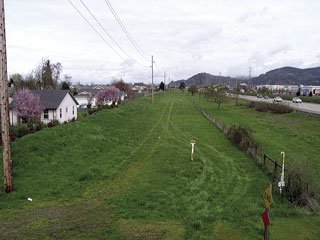Noise compatible land use planning can have positive effects on a community’s finances, aesthetics, and quality-of-life.
For instance, when communities use noise compatible land use planning to create a “quiet zone” instead of buying noise barriers, State departments of transportation can use the money saved for additional roadway improvements or maintenance programs. Noise compatible land use planning can be used to attractively design open space next to a road or highway for both passive and active recreational uses. Open spaces can also be designed to make commercial or business properties more visible to existing and future customers.

Reduce the Noise and Create a Quiet Zone
Effective noise compatible land use planning can reduce the need for construction of many noise barriers in highway programs
Using land in planned, predetermined ways allows greater development flexibility for neighboring communities, since the planning practices are known in advance.
Finally, noise compatible land use planning provides appealing alternatives for reducing traffic noise when compared to noise barriers, which are more visually and physically restrictive.
As vacant land in many communities disappears, the pressure to use areas next to highways may increase. But communities can use noise compatible land use strategies creatively, with very positive results.